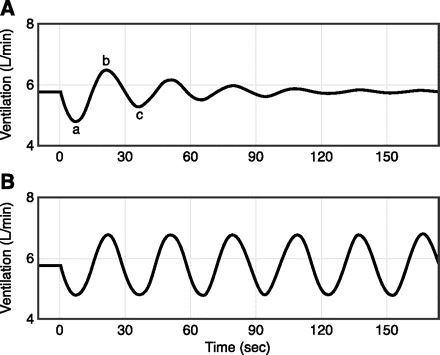Fig. 6.

Loop gain (LG) depicts the ratio of ventilatory response to disturbance ratio. A: example of a LG of 0.72. The ventilatory control system is disturbed with a transient reduction in ventilation (a). This produces a response (b) in the opposite direction that is 72% as large as the disturbance. The next response (c) will also be 72% as large as b, etc. Thus a LG of 0.72 produces transient fluctuations in ventilation, but ventilation eventually returns to baseline. B: a LG ≥1 will produce a response that is equal or greater in magnitude to the disturbance. Ventilation, therefore, oscillates without returning to baseline. The system in B is highly unstable. The closer LG is to zero, the smaller the fluctuations in ventilation, and thus the more stable the system (Fig. 7 illustrates how the magnitude of ventilatory overshoots and undershoots, i.e., stability, are determined by two key components of loop gain, namely, controller and plant gains). [From Wellman et al. (715).]
